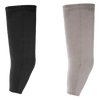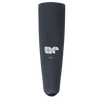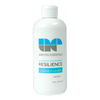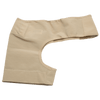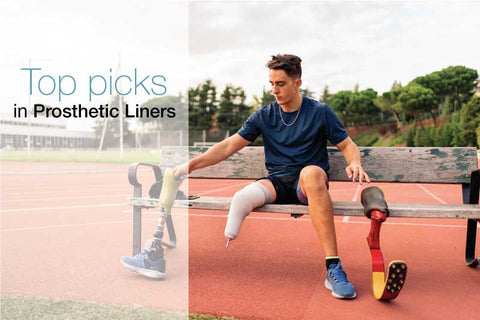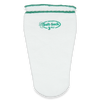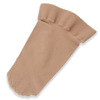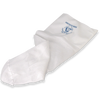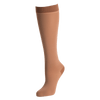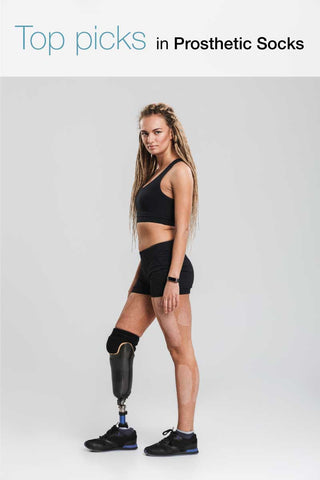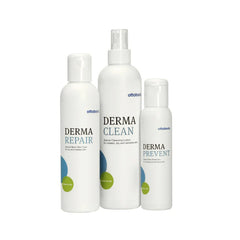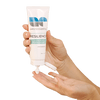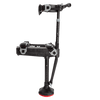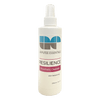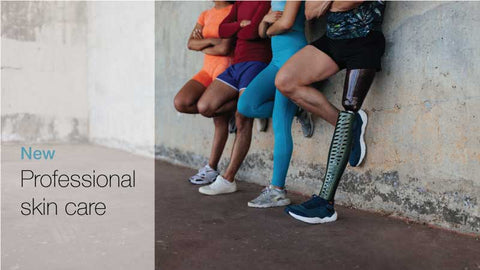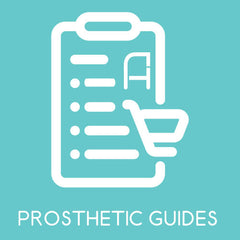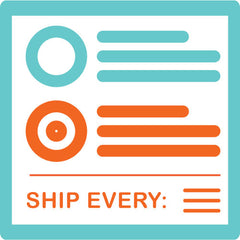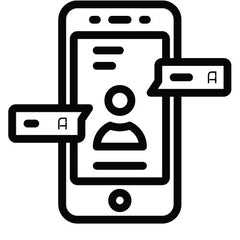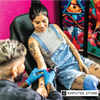How to Afford a Prosthetic Limb: Grants, Programs, and Funding Resources for Amputees
Reading Time: 10 minutes
———
Summary:
-
High-quality prosthetics can cost tens of thousands
-
Insurance rarely covers advanced or sport prostheses
-
U.S., UK, EU offer grants via nonprofits, charities
-
Crowdfunding, appeals, and local programs fill gaps
———
Studies have shown that regular prosthetic limb use improves the quality of life of people with limb loss and limb difference, physically, emotionally, and mentally. However, getting a high-quality prosthetic limb, which can cost anywhere from a few thousand to tens of thousands of dollars or pounds, is financially challenging for many.

Although some public health systems and insurance plans cover the basics, many individuals with limb loss still face major funding gaps, especially for advanced or sport-specific prostheses. The good news is that there are reputable, well-established organizations in the U.S., UK, and Europe that can help cover or reduce the cost. This guide can help you get started.
Where to Get Prosthetic Limb Funding in the U.S.
Start with your health plan
Check both DMEPOS/Prosthetic Devices & Orthotics and DME sections. Coverage typically requires a doctor’s order and medical-necessity documentation (often called a Letter of Medical Necessity or LMN) and may need prior authorization.
If denied, appeal. You have internal and external review rights, and many denials are overturned on appeal. If your coverage is still inadequate, look to reputable nonprofits (listed below) and the Amputee Coalition’s funding resources for assistance.
U.S. Non-Profits and Organizations
|
Organization |
Who Qualifies for Help |
How They Help |
|
Limbs for Life Foundation |
U.S. citizens/legal residents with no other way to pay; low-income |
Pays partner clinics directly for lower-limb prosthetic care—often covering full costs |
|
Steps of Faith Foundation |
Uninsured/underinsured amputees in the U.S. |
Finds donating prosthetists and covers prosthetic limb costs |
|
Heather Abbott Foundation |
Traumatic limb loss survivors who need specialized/custom prostheses not typically covered by insurance |
Offers grants for custom and activity-specific prostheses |
|
50 Legs |
Children and adults in the U.S. |
Provides high-quality prosthetics through partner facilities; recipients do not receive bills |
|
Jordan Thomas Foundation |
Children with limb loss |
Provides pediatric prostheses through children’s growing years (up to ~age 18) |
|
Amputee Blade Runners |
U.S. residents seeking a running/sports leg |
Provides free running prosthetics (sports blades) and fittings |
|
Move for Jenn Foundation |
Amputees (often sarcoma-related) needing active prosthetics typically not covered by insurance |
Grants for active-wear/sport prostheses |
|
Challenged Athletes Foundation |
Individuals worldwide with permanent physical disabilities |
Annual grants for sports equipment/expenses (including athletic prostheses); year-round Operation Rebound for veterans/first responders |
|
Shriners Children’s – POPS |
Children/teens needing pediatric orthotics and prosthetics; care regardless of ability to pay |
Provides pediatric O&P evaluation, fabrication, and follow-up through POPS clinics |
|
VA Prosthetic & Sensory Aids Service (PSAS) |
Veterans enrolled in VA healthcare with a medical need for a prosthetic device |
Provides clinical prosthetic services/devices (including artificial limbs) and related benefits (HISA, AAE, etc.) |
|
Help Hope Live (nonprofit fundraising) |
U.S. patients with catastrophic injury/illness |
Runs tax-deductible, needs-based medical fundraising and pays vendors (clinics) directly with raised funds |
|
AMPUTEE AID |
Dedicated to restoring hope, independence, and dignity for amputees who lack access to essential resources. | Prosthetic Limb Assistance: Providing new or refurbished prosthetic limbs to individuals who are uninsured, underinsured, or facing financial hardship. |
State and Local Resources
Help is also available at the state and local level. Here’s where you can find them:
-
Vocational Rehabilitation Services: If your prosthesis will aid in your job, check if your state covers the cost.
-
Medicaid: Some states offer more comprehensive prosthetic coverage than private insurance plans.
-
Assistive Technology Programs: These programs include equipment loan closets that lend items to people with disabilities, as well as refurbished prosthetic limbs.
-
Local hospitals often collaborate with nonprofits like Steps of Faith Foundation or Limbs for Life to provide charity care.
Getting Help from Crowdfunding and the Community
There are a lot of people willing to lend a hand. That's where crowdfunding comes in. Help Hope Live focuses on raising funds for medical prosthetics. At the same time, platforms like GoFundMe and Mightycause can tap into a wider audience and work well when paired with outreach to local news and social media.
Before you apply for funding:
Plan out your routes: Begin with your health plan, and if denied, appeal. At the same time, explore public channels like State Vocational Rehabilitation for job-critical needs, VA PSAS if you’re a veteran, Medicaid/EPSDT for children, and workers’ comp if the injury happened at work.
Check if your prosthetist works with or accepts charity payments, and consider using a partner clinic if needed.
Where to Find Funding for Prosthetic Limbs in the UK
In the UK, Scotland, Wales, and Northern Ireland, the National Health Service (NHS) typically covers necessary prosthetic limbs based on individual medical need and evidence of benefits. However, coverage varies depending on the specific component. For example, high-tech options like myoelectric hands and microprocessor-controlled knees are often approved if there's solid clinical evidence to support them.
That being said, if you acquire a prosthetic limb through the NHS, you generally cannot “top-up” that prosthesis by adding parts or enhancements privately. For example, you can’t pay to upgrade an NHS-supplied prosthetic with non-NHS components.
UK National and Charitable Support
|
Organization |
Who Qualifies for Help |
How They Help |
|
Open Bionics Foundation |
People in the UK with below-elbow limb difference (including children) |
Direct funding toward a Hero Arm; simple application reviewed by trustees |
|
Open Bionics (Funding Support team) |
Anyone pursuing a Hero Arm who needs help securing funds |
They actively secure grants/charitable support and have documented 100%-funded cases. (Not itself a charity fund, but a proven route to funding.) |
|
Positive Bones |
UK residents with limb loss/limb difference |
Grants for specialist equipment/services, including prosthetics; trustees assess quarterly; payments go directly to the provider |
|
Access to Work (UK Gov) |
Working-age people (16+) in England, Scotland, Wales who are in/starting paid work and have a disability/health condition |
Grants for work-related support: specialist equipment, support workers, travel, workplace adaptations |
|
Blesma – The Limbless Veterans |
UK Armed Forces veterans |
Grants to assist with mobility and related needs; dedicated prosthetics support officers to help members get the best clinical provision |
|
Veterans’ Mobility Fund (administered by Help for Heroes in partnership with Blesma) |
Eligible UK veterans with mobility needs |
In-kind awards of specialist mobility equipment (can include specialist prosthetics/orthotics); fund recently extended with new government support |
|
Royal British Legion (RBL) |
UK Armed Forces community |
Financial support grants that can include help at home and mobility-related needs |
|
Tree of Hope |
Children/young people in the UK who need healthcare not available via NHS |
Registered charity that runs compliant fundraising with Gift Aid and pays suppliers directly for eligible medical equipment/therapy (can include prosthetic-related costs) |
Before you apply for funding:
Plan strategically: Start with an NHS limb-center reassessment, then consider Access to Work (if your job requires it), followed by targeted charities like Open Bionics Foundation, Positive Bones, or Blesma. If there's still a gap, explore charity-hosted crowdfunding options.
Avoid using private funds to supplement an NHS-provided limb. Instead, look into getting a separate device, like one for sports or water activities, if it's outside the NHS's scope.
Where to Find Funding for Prosthetic Limbs in Europe
|
Organization |
Who Qualifies for Help |
How They Help |
|
Ottobock Global Foundation |
Amputees, particularly children, in crisis |
Provides prosthetic/orthotic care for Europe-based humanitarian cases |
|
Challenged Athletes Foundation (CAF) – International |
All amputees |
Provides equipment or sports-expense grants for training, competition, travel, and maintenance |
|
Entr’Aide – Une lame pour courir (France) |
Children who need a running blade to participate in sports |
In-kind provision/loan of running blades (not cash grants) |
|
Ein Herz für Kinder (BILD hilft e.V.) (Germany) |
Children in need (case-by-case) |
Charitable funding that has included special prostheses; discretionary, not a standing entitlement |
|
art4sport ONLUS (Italy) |
Children and teenagers with limb loss or limb difference who want to practice sport |
Finances sports prostheses and related sporting aids |
|
Fundacja Jaśka Meli “Poza Horyzonty” (Poland) |
Children and adults needing upper- or lower-limb prostheses |
Co-funds the purchase/repair of prosthetic limbs; long-running, case-based support |
|
Fundacja Avalon (Poland) |
People with disabilities needing to raise funds for medical equipment/services, including prostheses |
Creates individual sub-accounts and enables tax-deductible/crowdfunded donations paid directly to suppliers |
|
Fundacja Moc Pomocy (Poland) |
People with disabilities needing rehab/medical equipment funding, including prosthetics |
Sub-account crowdfunding; pays invoices directly for approved rehab/medical equipment |
|
Uniek Sporten Hulpmiddelen (Fonds Gehandicaptensport & partners) (Netherlands) |
NL residents who don’t get full coverage for a sport prosthesis/aid via Wmo/Zvw/Wlz/UWV |
Funds up to 85% of the needed amount after other routes; 15% own contribution (max €250). Separate Uniek Sporten Hulpmiddelen lets you borrow sport aids to try (up to ~4months) |
|
Uniek Sporten – Sportprothese info/loan (Netherlands) |
Amputees wanting to try a running blade |
Practical route to test a blade (e.g., via Ottobock loan fitted to existing socket) through your prosthetist |
|
Bidragsstiftelsen (linked with DHR) (Sweden) |
People in Sweden with significant mobility impairment |
Individual grants that can cover assistive devices and more; the annual application window is from May 1 to Sep 1 |
|
Stiftelsen för bistånd åt rörelsehindrade i Skåne (Sweden) |
Residents of Skåne with mobility impairments (children/young people prioritized) |
Grants; fixed deadlines (e.g., Mar 31 and Sep 30) |
Before you apply for funding:
Organize your funding sources: Start with your national health insurance or assistive-device list, then move to municipal or regional disability funds (such as social services). If applicable, include accident or work-injury insurance; consider return-to-work or employer programs; approach country charities. If dealing with displaced persons due to a crisis, explore international projects (like Ottobock Global Foundation).
If public health systems prohibit top-ups, apply separately for additional devices (e.g., for sports or water use).
The bottom line
Figuring out the financial side of getting a prosthetic limb can be overwhelming, but there are plenty of resources available. By working with your health insurance, appealing denied claims, and looking into nonprofit groups that provide support, you can find the funding you need to get high-quality prosthetics.
We hope this guide helps you get started exploring your options. And we wish you a smooth journey toward better mobility and a higher quality of life with the right prosthetic.
Related Reading:
How Daily Prosthetic Usage Influences Quality of Life in Lower-Limb Amputees
Health Insurers Cut Back on Prosthesis Coverage Over Medical Doubts

